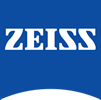
Sessão de Encontro com o Autor – Tema Livre (Pôster)
Código
P078
Área Técnica
Uveites / AIDS
Instituição onde foi realizado o trabalho
- Principal: Faculdade de Medicina FMUSP, Universidade de São Paulo
Autores
- JOYCE HISAE YAMAMOTO (Interesse Comercial: NÃO)
- Marcelo Mendes Lavezzo (Interesse Comercial: NÃO)
- Viviane Mayumi Sakata (Interesse Comercial: NÃO)
- Fernanda Maria Souto (Interesse Comercial: NÃO)
- Ruy Felippe Brito Gonçalves Missaka (Interesse Comercial: NÃO)
- Celso Morita (Interesse Comercial: NÃO)
- Cintia Kanenobu (Interesse Comercial: NÃO)
- Smairah Frutuoso Abdallah (Interesse Comercial: NÃO)
- Maria Kiyoko Oyamada (Interesse Comercial: NÃO)
- Carlos Eduardo Hirata (Interesse Comercial: NÃO)
Título
DO TREATMENT INTERFERE IN THE COURSE OF VOGT-KOYANAGI-HARADA DISEASE (DVKH)?
Objetivo
To compare clinical and electroretinogram (ERG) outcomes in VKHD patients treated with different treatment protocols.
Método
23 patients with VKHD from acute onset were systematically followed during a minimum 24-mo follow-up as part of an ongoing study started on 2011. All patients were initially treated with 3-day 1g methylprednisolone pulsetherapy followed by 1mg/kg/d oral prednisone with slow tapering. Treatment were corticosteroid only (n=6, group 1), IMT before M4 (n=5, group 2), IMT between M4 and M7 (n=6, group 3) and IMT > M7 (n=6, group 4). IMT consisted of azathioprine (2mg/kg/d) or mofetil mycophenolate (2g/d). Clinical and posterior segment imaging inflammation on Spectralis HRA+OCT and full-field (ff) ERG on Retiport, Roland were systematically carried out. Variation ≥ 30% of scotopic ffERG parameters represented the worsening group. Descriptive statistics, Kruskal-Wallis, Likelihood ratio and Dunn’s multiple comparison tests were used to analyze data. This study was approved by the Institutional Ethics Committee.
Resultado
At disease onset, groups did not differ on clinical basis (Table). Nevertheless, group 3 had the worst visual acuity at M1 (p=0.593) and the highest pleocytosis (p=0.983) suggesting a more severe disease group from the onset. Further, all eyes from Group 3 had sunset glow fundus (p=0.044). Anterior chamber cells fluctuation was not observed in group 1 (p=0.052). Presence of other inflammatory signs did not differ between treatment groups. Nevertheless, dark dots (DD) scores were significantly lower in group 2 (p-0.022). During follow-up, 14 eyes (30.4%) were defined as ffERG worsening group and 32 eyes (69.6%) as stable group. FfERG worsening group had no correlation with inflammatory signs neither treatment schedule.
Conclusão
Earlier IMT did better control choroidal subclinical inflammation as observed by lowest DD score. Nevertheless, clinical inflammation control neither ffERG results differed between treatment different groups.
63º Congresso Brasileiro de Oftalmologia
4 a 7 de setembro de 2019 | Windsor Convention & Expo Center Barra da Tijuca | Rio de Janeiro | RJ | Brasil
ANVISA: 25352012367201880









